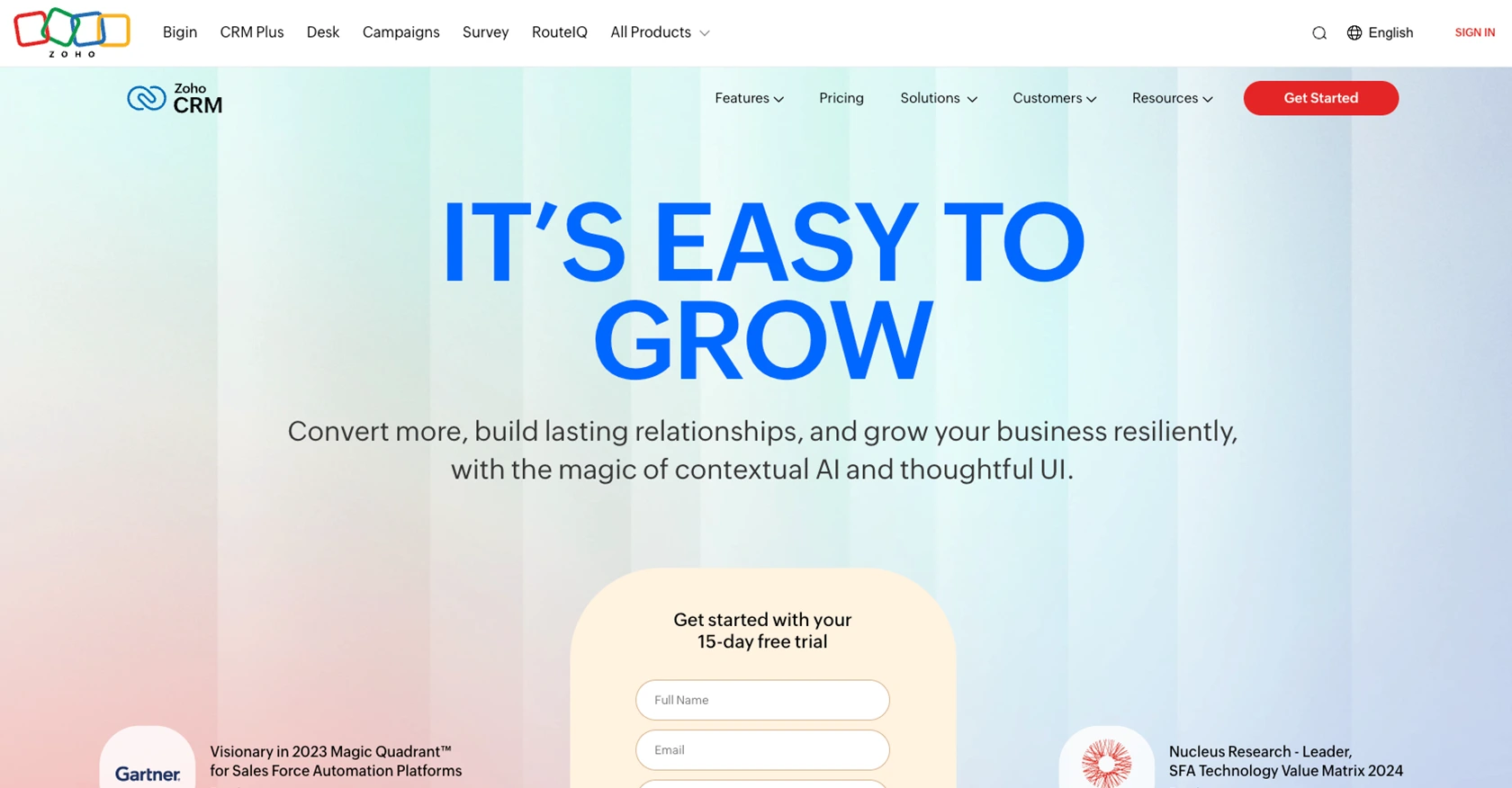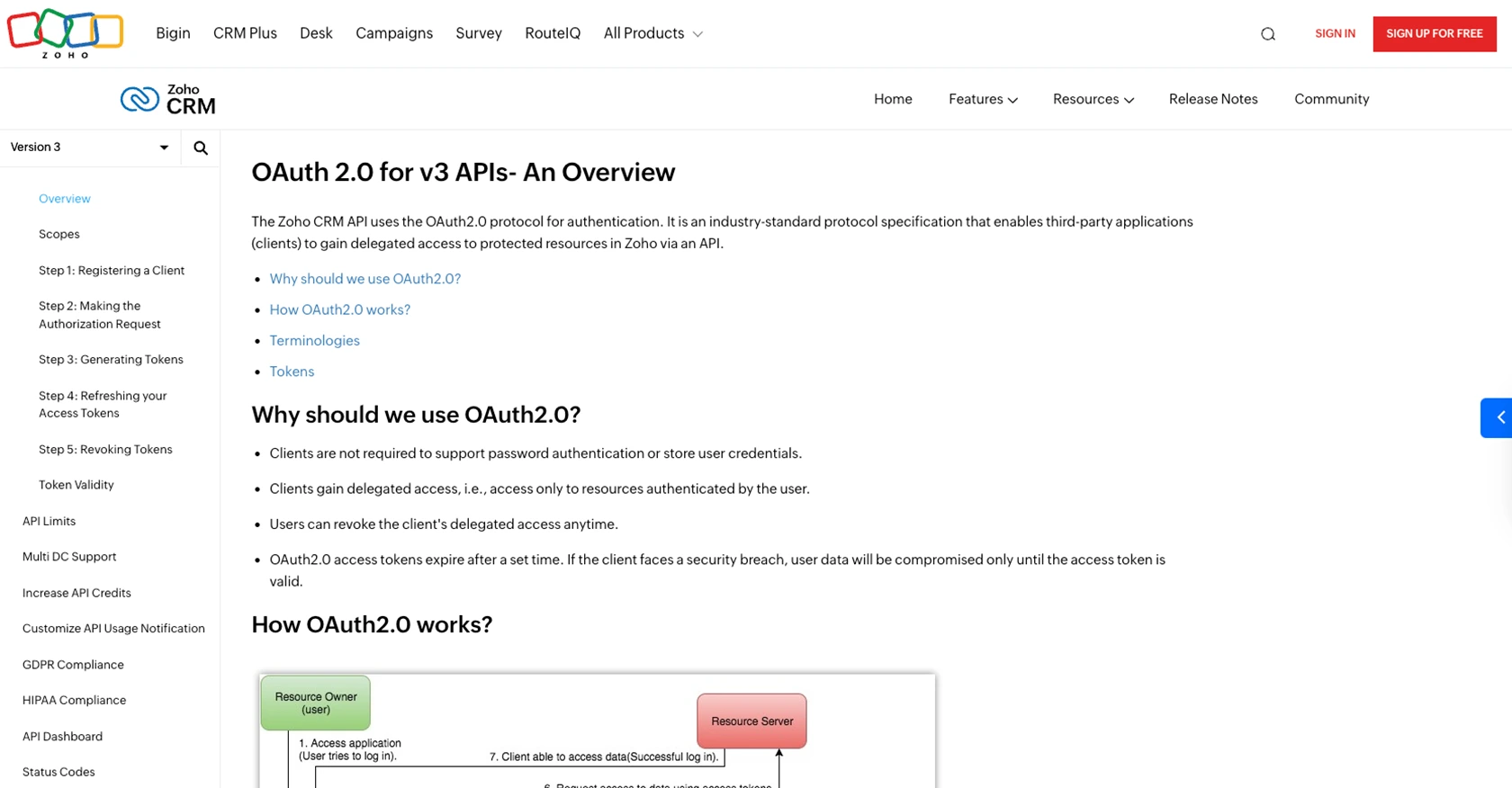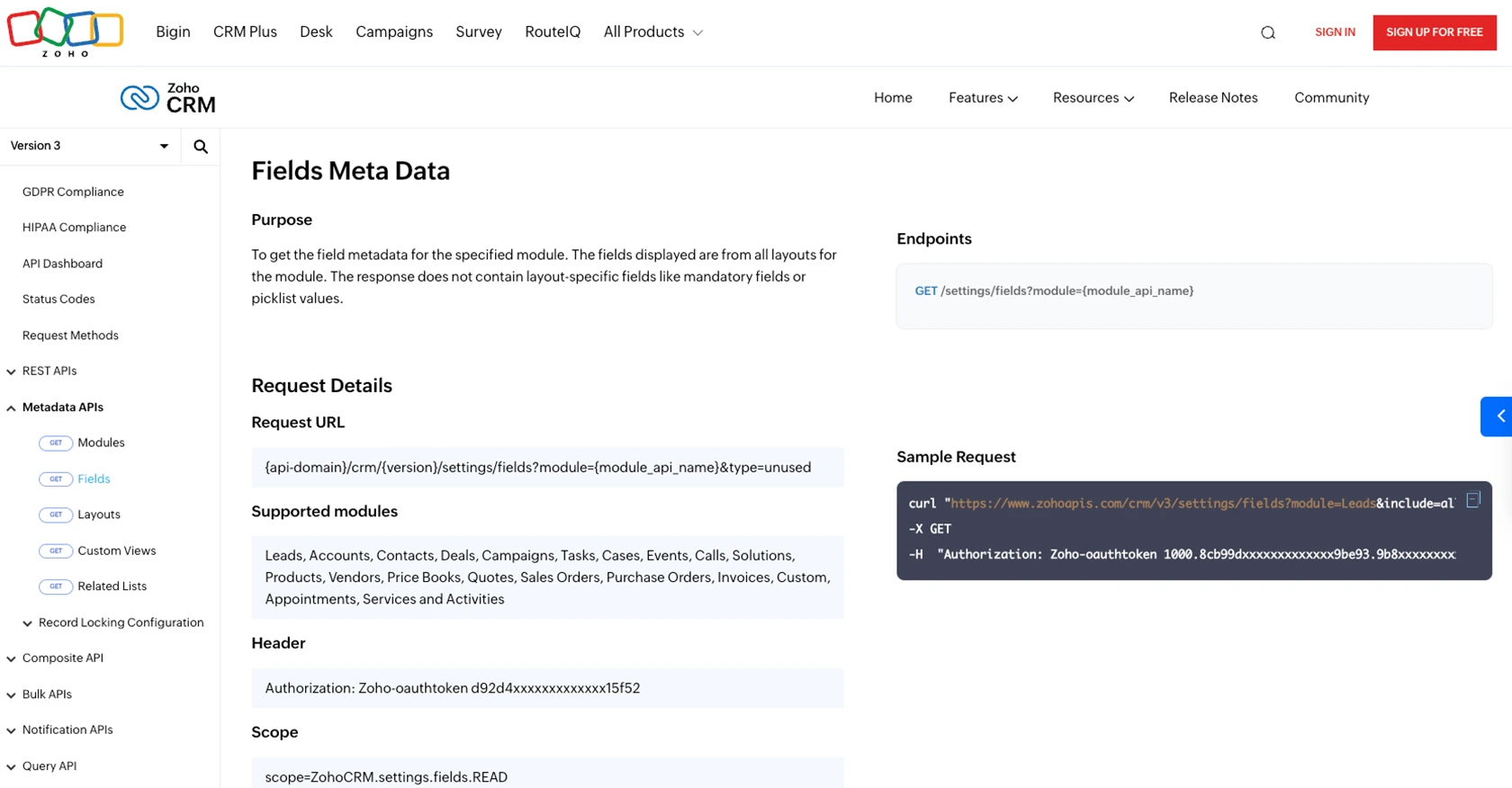Using the Zoho CRM API to Get Notes (with PHP examples)

Introduction to Zoho CRM
Zoho CRM is a comprehensive customer relationship management platform that empowers businesses to manage their sales, marketing, and support in one unified system. Known for its flexibility and scalability, Zoho CRM is a popular choice for businesses looking to enhance their customer interactions and streamline operations.
Developers often integrate with Zoho CRM to automate and enhance business processes. By leveraging the Zoho CRM API, developers can access and manipulate data such as contacts, leads, and notes, allowing for seamless integration with other systems. For example, retrieving notes from Zoho CRM using PHP can enable a business to display customer interactions on their internal dashboard, providing valuable insights to sales teams.
Setting Up Your Zoho CRM Test/Sandbox Account
Before you can start interacting with the Zoho CRM API, you'll need to set up a test or sandbox account. This environment allows you to safely experiment with API calls without affecting your live data.
Creating a Zoho CRM Account
If you don't already have a Zoho CRM account, you can sign up for a free trial on the Zoho CRM website. Follow the instructions to create your account. Once your account is set up, you can log in and access the CRM dashboard.
Registering Your Application for OAuth Authentication
Zoho CRM uses OAuth 2.0 for authentication, which requires you to register your application to obtain the necessary credentials.
- Go to the Zoho Developer Console.
- Select the appropriate client type for your application. For most web applications, choose "Web Based".
- Enter the required details:
- Client Name: The name of your application.
- Homepage URL: The URL of your application's homepage.
- Authorized Redirect URIs: The URL where Zoho will redirect after authentication. This is typically a URL on your server that can handle the OAuth response.
- Click Create to register your application.
Upon successful registration, you will receive a Client ID and Client Secret. Keep these credentials secure as they will be used to authenticate API requests.
Generating Access and Refresh Tokens
With your application registered, you can now generate access and refresh tokens to authenticate API requests.
- Direct users to the Zoho authorization URL with your client ID and redirect URI. This will prompt them to authorize your application.
- Upon authorization, Zoho will redirect to your specified URI with an authorization code.
- Exchange this authorization code for access and refresh tokens by making a POST request to Zoho's token endpoint.
'authorization_code',
'client_id' => $client_id,
'client_secret' => $client_secret,
'redirect_uri' => $redirect_uri,
'code' => $authorization_code
];
$options = [
'http' => [
'header' => "Content-type: application/x-www-form-urlencoded\r\n",
'method' => 'POST',
'content' => http_build_query($data),
],
];
$context = stream_context_create($options);
$result = file_get_contents($url, false, $context);
$response = json_decode($result, true);
$access_token = $response['access_token'];
$refresh_token = $response['refresh_token'];
?>Store the access and refresh tokens securely. The access token is valid for an hour, while the refresh token can be used to obtain new access tokens.
For more detailed information, refer to the Zoho CRM OAuth documentation.

sbb-itb-96038d7
Making API Calls to Retrieve Notes from Zoho CRM Using PHP
In this section, we'll guide you through the process of retrieving notes from Zoho CRM using PHP. This involves setting up your environment, writing the necessary code, and understanding the expected output.
Setting Up Your PHP Environment
Before making API calls, ensure you have the following prerequisites:
- PHP 7.4 or higher installed on your machine.
- Composer for managing dependencies.
Install the necessary PHP library for making HTTP requests. We recommend using Guzzle, a popular HTTP client:
composer require guzzlehttp/guzzleWriting the PHP Code to Fetch Notes from Zoho CRM
With your environment set up, you can now write the PHP code to interact with the Zoho CRM API. Create a file named get_zoho_notes.php and add the following code:
request('GET', 'https://www.zohoapis.com/crm/v3/Notes', [
'headers' => [
'Authorization' => 'Zoho-oauthtoken ' . $access_token,
]
]);
$data = json_decode($response->getBody(), true);
foreach ($data['data'] as $note) {
echo 'Note ID: ' . $note['id'] . "\n";
echo 'Note Content: ' . $note['Note_Content'] . "\n\n";
}
?>Replace your_access_token with the access token you obtained earlier. This script sends a GET request to the Zoho CRM API to retrieve notes and prints each note's ID and content.
Running the PHP Script and Verifying the Output
Execute the script from your terminal:
php get_zoho_notes.phpYou should see the notes from your Zoho CRM account displayed in the terminal. If the request is successful, the notes will be listed with their IDs and content.
Handling Errors and Status Codes
It's crucial to handle potential errors when making API calls. Zoho CRM provides various status codes to indicate the result of your request. Here are some common ones:
- 200 OK: The request was successful.
- 400 Bad Request: The request was invalid. Check your parameters.
- 401 Unauthorized: Authentication failed. Verify your access token.
- 403 Forbidden: You do not have permission to access the resource.
- 429 Too Many Requests: You have exceeded the rate limit.
For more details on error handling, refer to the Zoho CRM Status Codes documentation.

Conclusion and Best Practices for Using Zoho CRM API with PHP
Integrating with the Zoho CRM API using PHP provides a powerful way to enhance your business processes by automating data retrieval and manipulation. By following the steps outlined in this guide, you can efficiently retrieve notes and other data from Zoho CRM, enabling seamless integration with your existing systems.
Best Practices for Secure and Efficient API Integration
- Securely Store Credentials: Always keep your client ID, client secret, access tokens, and refresh tokens secure. Avoid exposing them in public repositories or client-side code.
- Handle Rate Limiting: Zoho CRM imposes rate limits on API requests. Monitor your API usage and implement exponential backoff strategies to handle rate limit errors gracefully. For more details, refer to the Zoho CRM API Limits documentation.
- Refresh Tokens Regularly: Access tokens are valid for an hour. Use refresh tokens to obtain new access tokens without requiring user intervention.
- Standardize Data Fields: Ensure consistent data formats across your systems to facilitate smooth data integration and reporting.
Enhancing Integration with Endgrate
While integrating with Zoho CRM directly is effective, using a tool like Endgrate can further streamline your integration process. Endgrate allows you to manage multiple integrations through a single API endpoint, saving time and resources. By outsourcing integrations to Endgrate, you can focus on your core product development and deliver a seamless integration experience to your customers.
Explore how Endgrate can simplify your integration needs by visiting Endgrate's website.
Read More
- https://endgrate.com/provider/zohocrm
- https://www.zoho.com/crm/developer/docs/api/v3/oauth-overview.html
- https://www.zoho.com/crm/developer/docs/api/v3/scopes.html
- https://www.zoho.com/crm/developer/docs/api/v3/register-client.html
- https://www.zoho.com/crm/developer/docs/api/v3/api-limits.html
- https://www.zoho.com/crm/developer/docs/api/v3/status-codes.html
- https://www.zoho.com/crm/developer/docs/api/v3/field-meta.html
- https://www.zoho.com/crm/developer/docs/api/v3/get-records.html
Ready to get started?
